

Guidelines for submitting articles to Roda Golf Resort Today
Hello, and thank you for choosing La Torre Today.com to publicise your organisation’s info or event.
Roda Golf Resort Today is a website set up by Murcia Today specifically for residents of the urbanisation in Southwest Murcia, providing news and information on what’s happening in the local area, which is the largest English-speaking expat area in the Region of Murcia.
When submitting text to be included on Roda Golf Resort Today, please abide by the following guidelines so we can upload your article as swiftly as possible:
Send an email to editor@spaintodayonline.com or contact@murciatoday.com
Attach the information in a Word Document or Google Doc
Include all relevant points, including:
Who is the organisation running the event?
Where is it happening?
When?
How much does it cost?
Is it necessary to book beforehand, or can people just show up on the day?
…but try not to exceed 300 words
Also attach a photo to illustrate your article, no more than 100kb

A history of Los Alcazares
From Roman villa and Moorish fortress to a thriving tourist resort and the youngest municipality in the Region of Murcia
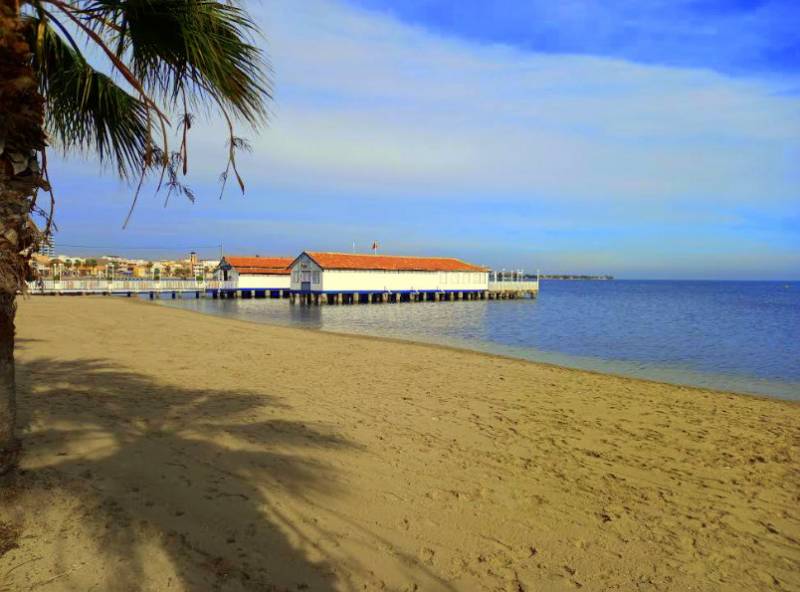 In a purely administrative sense, the history of the municipality of Los Alcázares goes back only to the year 1983, when it came into being through the segregation of territory which previously fell within the boundaries of San Javier and Torre Pacheco.
In a purely administrative sense, the history of the municipality of Los Alcázares goes back only to the year 1983, when it came into being through the segregation of territory which previously fell within the boundaries of San Javier and Torre Pacheco.
However, there is ample evidence that the area was home to human settlements well before the birth of Christ, and that it was a place of importance to the Romans and to the Moors, who named it Al-Qasr or Al-Kasar (the fortress, or palace). It is speculated that the fortress or palace to which this refers was built by King Ibn Mardanis, the “Wolf King” of Murcia between 1147 and 1172, but whether or not this is the case it eventually led to the current name of the town.
PREHISTORY
No concrete evidence has been found of early human settlements in Los Alcázares itself, but it is known that during the Late Stone Age and Early Bronze Age there was considerable human activity in the area. The rich and shallow fishing grounds of the Mar Menor ensured a guaranteed food supply and remains have been found in Cabo de Palos and Los Nietos among other places, and at the same time, the shoreline and the enclosure of the Mar Menor by La Manga gave a certain amount of security to the primitive inhabitants
It is therefore clear that the forefathers of those who now live around the lagoon were fishing here some 4,500 years ago, and the underwater discoveries of shipwrecks, amphorae and saltwater pools confirm the later presence of Phoenicians, Estruscans, Greeks and Romans.
ANCIENT HISTORY
The earliest evidence to have been found in Los Alcázares of human habitation is the remains of a Roman enclave which were discovered underneath what is now the built-up area of the town. The location is very close to the main Roman road which followed the Mediterranean coast between Tarraco (Tarragona in Catalunya) and Carthago Nova (Cartagena), and the most significant items found are now kept in the regional archaeological museum in Murcia.
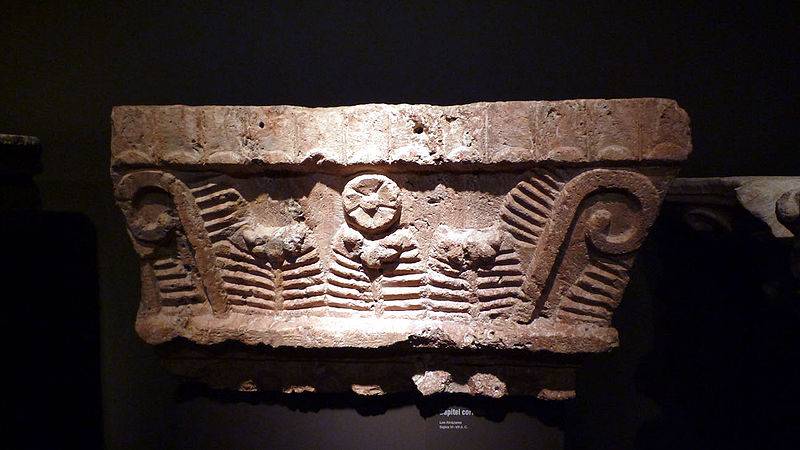 As recently as 2022, an excavation team searching for traces of the Wolf King came across the remains of a Roman villa alongside the Hotel La Encarnación, complete with painted walls. The structure dates from the time of the Flavian Dynasty (60 to 96 AD).
As recently as 2022, an excavation team searching for traces of the Wolf King came across the remains of a Roman villa alongside the Hotel La Encarnación, complete with painted walls. The structure dates from the time of the Flavian Dynasty (60 to 96 AD).
The nature of the items confirms that there was a large Low Roman Empire villa in Los Alcázares, complete with thermal baths and probably making use of the therapeutic properties attributed to the warm and salty water of the Mar Menor. In addition, “denarius” coins belonging the Roman Republic have been found in the surrounding area, indicating that Roman occupation lasted at least from the 2nd to the 5th century.
During this time researchers have uncovered evidence that it was the Romans who drained some of the areas alongside the lagoon and installed the first fishing ports and salted fish factories. The 4th and 5th centuries were the age in which one of the prime Roman delicacies produced in what is now the Region of Murcia was garum sauce, a very salty and tangy fish-based condiment which fetched high prices all over the Roman world when exported and was made principally from mackerel.
Sadly, no remains of the sauce have been found, but it is widely referred to in writings of the time and the remains of pools and factories in which it was made are dotted along the Costa Cálida from Los Nietos to Águilas.
THE EARLY MIDDLE AGES AND THE MOORS
When Roman rule crumbled in the Iberian Peninsula it was replaced with centuries of Visigoth rule, which was localized rather than centralized. This lack of overall territorialization makes it difficult to pinpoint remains of the Visigoth period in Los Alcázares, but it is to be assumed that they continued to inhabit the late Roman settlements and make use of the infrastructures left behind.
In the early 8th century, though, all that changed, and following the Pact of Tudmir in 713 the area was subjected to Moorish Islamic rule. This ushered in the period during which Los Alcázares received the name by which we now know it (see above), and the creation of numerous freshwater wells and storage tanks guaranteed that permanent habitation was both viable and prosperous.
The Moors thus created a fortified settlement on the top of old Roman ruins, raising the status of the old “villa” to a higher level. Watchtowers were also doubtless constructed and palm groves planted at either end of what is now the town.
This makes Los Alcázares the longest-established town on the shore of the Mar Menor, with most of the town centre built over old remnants of the Moorish period, which ended in the 13th century. Right up until the 19th century there were still some Moorish structures standing on the seafront, in the small area between the promenade of Paseo Carrión, Calle Madrid and Calle Cartagena.
As others have over the last 200 years, the Moors saw Los Alcázares as a place to rest and relax, enjoying the therapeutic waters of the Mar Menor, but they also established a jetty in the centre of the bay. According to the 12th-century geographer Al-Idrisi small boats made their way into the lagoon carrying provisions which they traded for local products, with the goods including cereals, wine, honey and pistachios. However, it was not until the Christian era that Los Alcázares really became an important fishing and treading port.
THE CHRISTIAN REPOPULATION OF THE LATER MIDDLE AGES
During the 1240s Murcia was reconquered by the Christian forces of Aragón from the Moors, led by Prince Alfonso (later King Alfonso X “El Sabio”). He decreed that the land recovered should be distributed among his noble leaders from Catalunya, Aragón and Castilla, and by 1269 the boundaries of their lands and crop-watering rights had been established. Many of them, it should be added, were still administered by the Moors who had chosen to stay in the area and subject themselves to Christian rule and religion.
But in 1273 and 1274 many of these Moors fled an increasingly determined effort to take their land from them, and many more families arrived from further north to take over their agricultural properties, living in basic working houses known as “rahales”.
One of these was the Rahal de Abduraffe, which encompassed a large area between Los Alcázares and Torre Pacheco, and this was adjudicated to the Christian landlords Guillén de Narbona and Pedro Sánchez.
At this time Los Alcázares was the unofficial capital of the Mar Menor area, with a renewal of the fishing, agricultural and cattle activities which the Romans had instigated a millennium beforehand, and the Monarchy and local administrators made great efforts to maintain the population and production of this part of Spain. To protect them, they built watchtowers where fires were lit in times of danger to warn the population through their smoke, and from time to time the land was drained to remove the salty, brackish water which made crop growing impossible.
Infrastructures attracted investment, too: in the 15th century King Fernando IV (1295-1312) spent 15,000 maravedís on the construction of a port in the Mar Menor, and this, along with the watchtowers, did a great deal to boost trade and attract settlers. In turn, the settlers brought about improvements in farming and living conditions around the Mar Menor, and Fernando IV was thus able to award Juan Paraleja Fajardo a large amount of land for farming which had previously been a saltwater swamp.
In 1330 the Saavedra family arrived from Galicia in north-west Spain, followed by other notable groups such as the Carrión, Fontes and Arróniz families. They established their own farming territories and by the 15th century Sancho de Arróniz controlled the fishing, port and walled centre of Los Alcázares. This infuriated the ruling classes of Cartagena, who appealed to the Chancery of Granada, and for a while the land was taken out of the jurisdiction of the Council in Murcia. In the end, the authority of Murcia was restored but with Cartagena taking charge of the southern part of the Mar Menor, and between 1519 and 1595 twenty censuses were carried out and large swathes of land were entrusted to Cristóbal Fontes, whose name has ever since been strongly linked to the history of the town.
THE EARLY MODERN PERIOD
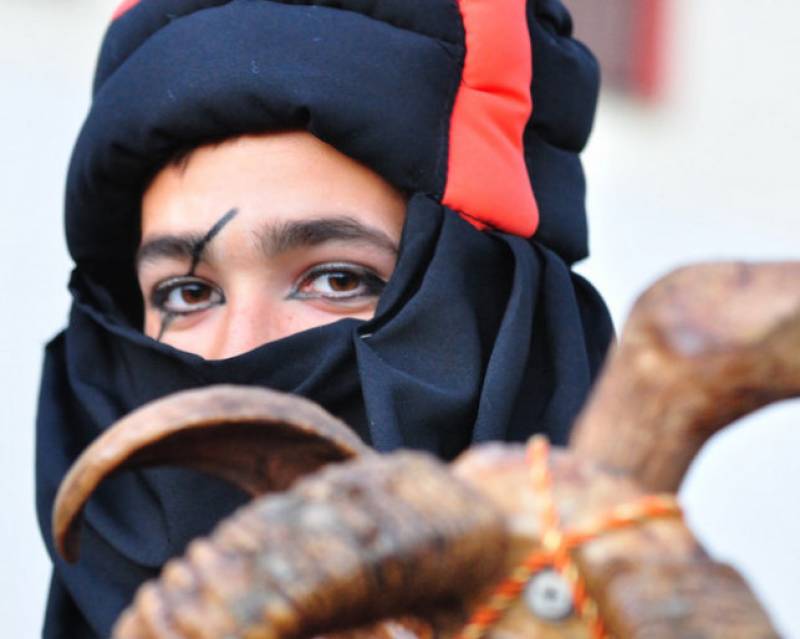 In the 16th and 17th centuries the most notable events along the coast of Murcia were the frequent Berber pirate raids, which are still remembered in the annual fiestas of Los Alcázares. For approximately 200 years the raiders from northern Africa were a constant threat, often causing serious damage and resulting in the loss of many lives, and understandably this led to people leaving the area and the population falling. The only deterrent for the Berbers was the sight of the watchtowers and the walls of Los Alcázares as they approached by sea, and it was simply not enough.
In the 16th and 17th centuries the most notable events along the coast of Murcia were the frequent Berber pirate raids, which are still remembered in the annual fiestas of Los Alcázares. For approximately 200 years the raiders from northern Africa were a constant threat, often causing serious damage and resulting in the loss of many lives, and understandably this led to people leaving the area and the population falling. The only deterrent for the Berbers was the sight of the watchtowers and the walls of Los Alcázares as they approached by sea, and it was simply not enough.
Eventually, during the 17th centuries, the watchtowers were strengthened and re-equipped throughout the Mar Menor, including the repairs which took place in 1625 at the towers of La Encañizada and Torre de Rame in Los Alcázares. They helped to thwart a Berber attack in the summer of 1636 and at the same time the Council of Murcia was beginning to improve the water supply to the Campo de Cartagena and the Mar Menor. By 1685 there were 11 wells in Los Alcázares, controlled by the local governor Ginés Saorín, also Mayor of the tower of Los Alcázares and the neighbouring land.
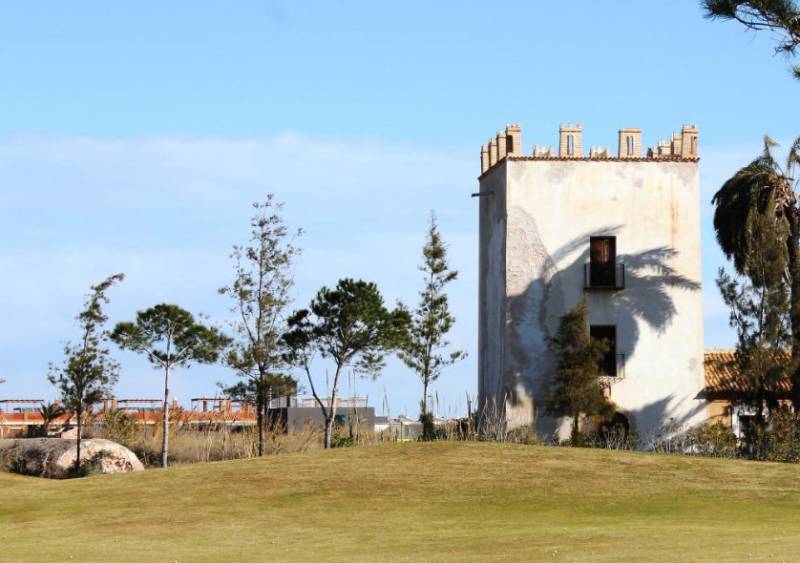 (At this time the centre of Los Alcázares was little more than the fortified tower, controlled by a Mayor, and a small walled area next to the old Roman baths, where there were wells to water the cattle which spent the winters on the pasture land of La Ribera).
(At this time the centre of Los Alcázares was little more than the fortified tower, controlled by a Mayor, and a small walled area next to the old Roman baths, where there were wells to water the cattle which spent the winters on the pasture land of La Ribera).
Although the threat of the Berbers was still present to a certain degree, in the 18th century life in Los Alcázares became safer and more stable. It was at this time that it again became a popular destination for those seeking a rest in the summer, and gradually villages were built around a central residence or “mayorazgo”. This brought about a social hierarchy, which set the population to work around the seasons of harvest-time and summer.
Towards the end of the century these villages included La Calavera, Torre Pacheco, San Javier and Roda, which was linked to Los Alcázares. Meanwhile, the warm climate and the warm, calm wáter of the Mar Menor attracted summer visitors from all over Murcia, including the Marquises of Torre Pacheco, Pastrana, Aledo, Villalta de los Llanos, Corvera and others. They in turn invited their Friends and relatives from all over the country, making Los Alcázares an early national holiday destination.
THE MODERN AGE
Come the 19th century, Los Alcázares had become a popular summer residence for numerous members of the nobility and at the same time a popular destination for farm workers from the “huerta” of Murcia, enjoying a couple of weeks of freedom in August before the annual planting and harvesting cycle began again in September. They came to perform their annual “novenario' (consisting of at least 9 dips in the Mar Menor), following old traditions handed down through generations.
As the century wore on there were certain conflicts between these two very different kinds of visitors and the residents, who resented the “invasion” of their land and property by the “barracas” (small huts and open-air eateries) of those coming from the huerta.
These problems were solved largely by the Fontes family, one of whom was the Marqués de Ordoño, José María Fontes Alemán. He owned the “La Cerca” estate which included most of the centre of the town and was proud of the Mar Menor, and in order to improve the situation he oversaw the construction of a market, made it possible to build on numerous plots and, in the late 19th and early 20th centuries, offered various of these plots to working class families. He achieved this by means of applying low taxes payable over long periods of time, enabling local farmers and fishermen to make the properties where their families had lived for generations their own.
In 1898 the church of La Asunción, later to become the parish church, and in the 20th century the size of the town mushroomed in a climate marked by the dispute over control between San Javier and Torre Pacheco and the mining boom in the Sierra Minera of La Unión.
Defining developments in these years included the Balneario de la Encarnación, which was built in 1901 and 1902 by Alfonso Carrión Belmonte. This magnificent structure dominated the beach in the centre of Los Alcázares and kickstarted tourism in the 20th century, up to the point where very soon the summers saw residents outnumbered by visitors in the town. Within a couple of years this trend became all the more pronounced as the local population dropped to only 60!
But the tourism boom was soon followed by economic and demographic growth, aided too by the creation in 1915 of the Military Air Base. This was the first Navy aerodrome in Spain and only the fourth of all military airbases (its predecessors being Cuatro Vientos, Alcalá de Henares y Guadalajara, all close to Madrid), and a pioneering establishment in the development of seaplanes. Of course, numerous military personnel were stationed at the base, and this in itself stimulated more economic activity, with over 100 locals eventually employed at the base.
The construction of the base brought employment to the town and stimulated social development, and in the 1920s, when it was at its peak, visitors included King Alfonso XIII, Alfonso de Orleans y Borbón (cousin of the King and a military aviator) and Ramón Franco (brother of the future dictator and also a pioneering aviator).
The population growth increased still further in 1936 when the military uprising led by Francisco Franco led to staff and equipment from the now abandoned Cuatro Vientos aerodrome being transferred to Los Alcázares. This made new housing and social services necessary and a local council and Town Hall were created under the eye of the military authorities and Base Commander Juan Ortiz. The first Mayor of this body was Antonio Menárguez Costa and his administration remained in place until the end of the Civil War in 1939.
This set a precedent for the independence of Los Alcázares as a municipality in its own right, but for the time being it remained under the control of San Javier and Torre Pacheco. In the 1950s, however, the clamour for independence grew louder, but it as not until 1972 that the “Asociación Cabezas de Familia de Los Alcázares” was formed and began actively laying the groundwork for municipality status to be awarded.
Two years after the death of Franco, in 1977, a group called G.I.A. (Grupo Independentista Alcazareño) was formed, and in 1978 y en 1978 Manuel Menárguez Albaladejo was elected president of the “Comisión Gestora Pro-Ayuntamiento de Los Alcázares” – Señor Menárgquez was the son of the military Mayor appointed in 1936. Finally, in response to his persistent campaigning, on 14th July 1983 the Council of State ruled in favour of the segregation of Los Alcázares, and on 13th October of that year the Town Hall was officially constituted by Decree 77/1983.
Los Alcázares was finally independent from San Javier and Torre Pacheco and enjoyed the same standing as its neighbours, and the years since have seen further massive growth. AS recently as 1991 the total population was just 3,683, but by 2024 the figure had risen to almost 20,000, including 7,000 non-Spaniards. This has seen the urban centre sprawl inland and northwards to absorb Los Narejos and reach the Roda Golf development.
This makes Los Alcázares one of the most cosmopolitan parts of Murcia, with residents from all over the world (including over 2,600 from Europe, mainly taking advantage of the growth of residential tourism which was previously fuelled by the international airport in San Javier). The tourism sector is exemplified by the proximity of numerous residential developments and golf resorts, including one (Serena Golf) which is on the outskirts of the town itself.
The opening of the AP-7 motorway between Cartagena in the south and Alicante and Valencia further north has made travel to, from and through Los Alcázares far quicker and easier, while the RM-19 motorway connects the area with the city of Murcia – and even though San Javier airport closed to passenger flights in 2019, the new Region of Murcia International Airport in Corvera is only 30 minutes’ drive away.
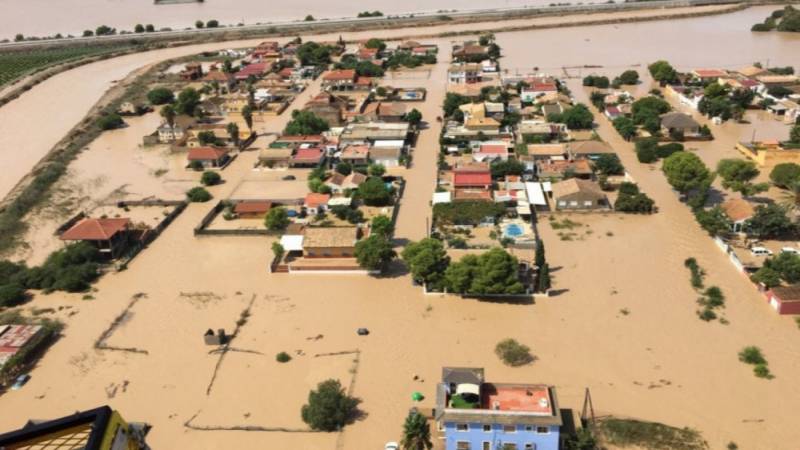 However, not everything has been plain sailing in the years since independence. In late 2019 and early 2020 a series of massive “gota fría” storms brought catastrophic flooding to many parts of Murcia and Los Alcázares was the worst hit, bringing about widespread destruction of property and infrastructures and ruining the lives of countless residents and homeowners. Since then the weather gods have been kinder and the Town Hall has led various initiatives to divert potential floodwater from the centre, but the threat of the elements still hangs over the whole of the inland shore of the Mar Menor as runoff water from the Campo de Cartagena has nowhere to go except towards the lagoon.
However, not everything has been plain sailing in the years since independence. In late 2019 and early 2020 a series of massive “gota fría” storms brought catastrophic flooding to many parts of Murcia and Los Alcázares was the worst hit, bringing about widespread destruction of property and infrastructures and ruining the lives of countless residents and homeowners. Since then the weather gods have been kinder and the Town Hall has led various initiatives to divert potential floodwater from the centre, but the threat of the elements still hangs over the whole of the inland shore of the Mar Menor as runoff water from the Campo de Cartagena has nowhere to go except towards the lagoon.
However, having survived the property boom and bust cycle of the first decade of the millennium, entered a new phase of expansion and growth and welcomed new residents from all over the world, Los Alcázares is well-placed to continue to enjoy prosperity as the 21st century continues.
The mild winter climate attracts more and more winter visitors from northern Europe and with tourism and agriculture still the central pillars of the economy a promising future lies ahead. The challenge is to marry that growth and the huge increase in built-up areas with the need to make progress sustainable, particularly in the face of global climate change, and this challenge is shared with the rest of the world.
Sources: regmurica.com, 112rmurcia.es, tarraconensis.com, Wikipedia, losalcazares.es

























